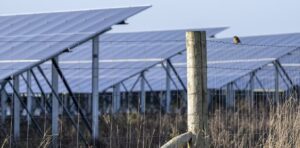Is it worthwhile charging a battery from the grid at off-grid prices?
In this article we demonstrate that batteries can’t pay for themselves without being coupled with solar power. This article is part of our series “What is the best strategy to maximise the Return on Investment for your battery?”
Have we discovered a perpetual profit machine hidden within the electricity network? Those greedy electricity retailers charge a fortune for power during peak periods (right when you’re using most energy), and much less during off-peak periods (when you’re asleep).
What if you could charge a battery overnight from cheap off-peak electricity, and use the battery to supply your needs during expensive peak periods? Making money during your sleep, night after night, Genius! Right?
This notion, called “arbritrage” sounds like a brilliant idea. Seeing as you’re trying to make a bit of coin, the financial equation is: can I make enough money from this to payback the cost of my investment in a battery?
In this article we’re going use PVsell software to answer this very question. We’ll use the Ausgrid network as an example, where Origin charges 52.8c/kWh for Peak electricity (2-8pm weekdays), 21.5c/kWh for shoulder (7am-2pm; 8pm-10pm weekdays and 7am-10pm weekends) and 13.2c/kWh off-peak. We’ll use a LG 6.4kWh battery costing $11000, and we will initially only discharge during peak periods.
The PVsell results dashboard below shows that the financial saving from this arbitrage is quite reasonable – we’re able to reduce our electricity bill by $519, a 27% saving. However, this isn’t enough of a saving to pay for the batteries in any reasonable period – the payback is over 21 years.
However, the screenshot also illustrates a possible reason: the Sample Day Energy Flow pane (bottom left) shows us that we are not able to fully discharge the batteries each day. On the day illustrated, our batteries still have 40% of their energy remaining. The Grid Independence KPIs pane shows that 84% of days we have some spare capacity remaining in the batteries at the end of the day, meaning some of our investment is wasted.

Though I may be happy that my peak charges have reduced by 92% – most of my power is being purchased at off-peak or shoulder rates, its come at a significant cost, one that is not going to repay itself. Part of the problem is the batteries sit idle on the weekends, for lack of a peak tariff (recall that weekends are peak and shoulder).
Indeed, the maximum annual revenue I could possibly expect from a 6.4kWh battery if I constrain myself to discharging during peak periods is $658, or $715 if I also allow discharging during shoulder periods on weekends – though if I do this the extra $55 causes my cycle count to jump from 261 cycles to 365 cycles per year. But whichever way you cut it, it’s not enough to justify a $11,000 investment, let alone $7000, and battery system prices would need to come down to $780/kWh before you’ll see a respectable payback.
In summary, arbitrage alone doesn’t justify purchasing a battery, even when you have a power price differential of 39c/kWh. Basically, to achieve a reasonable payback, batteries need to be coupled with a PV system that does most of the financial heavy lifting. Which is why when it comes to batteries, smaller is better – the less you invest in a battery, the less your ROI is dragged down, when compared to a PV-only system. Of course, early adopters will buy batteries despite their ROI – the challenges in selling to early adopters are explored in this article. In another article we’ll examine how much arbitrage can boost (or damage) your revenues when you have a PV-battery system.
Warwick Johnson is head of Sunwiz, which develops and markets the PVSell product.
This article was originally published on RE sister site One Step Off The Grid. To sign up for the weekly newsletter, click here.







